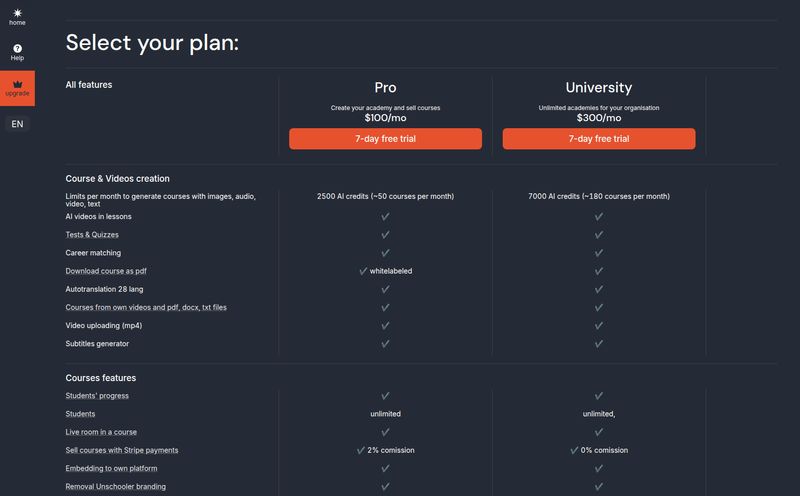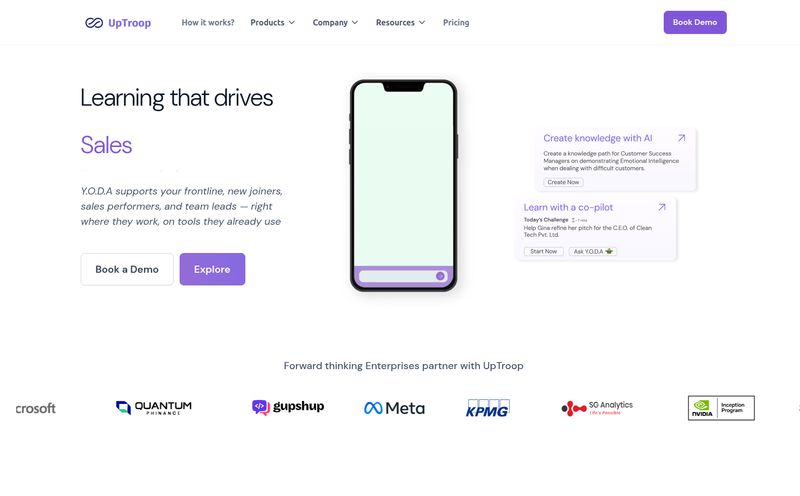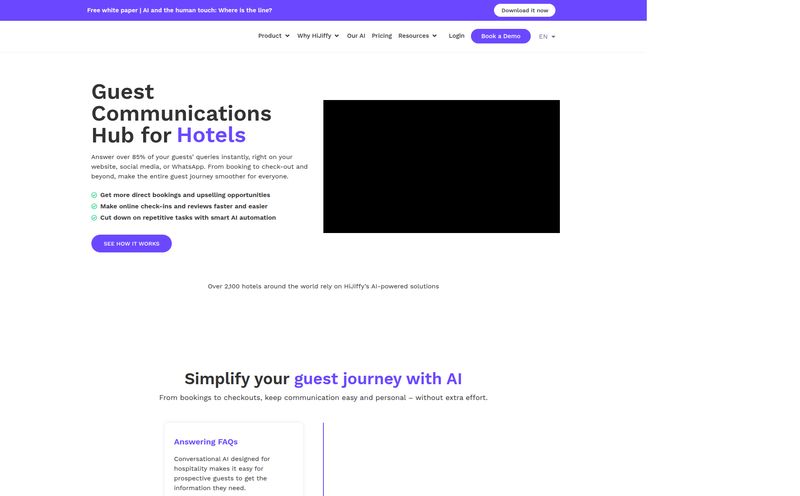Alright, let’s have a real chat. As someone who’s spent more late nights than I can count staring at a blank DAW, praying for a spark of inspiration, I’ve become both a skeptic and a hopeful follower of the AI music trend. We’ve all seen the gimmicks. The tools that promise to write a symphony but give you something that sounds like a broken ringtone. So when I heard about TwoShot, I’ll admit, my eyebrows went up. But after spending some time with it, I'm ready to talk about it. And I mean, really talk about it.
The whole pitch is about empowering producers, speeding up the workflow, and... get this... making sure artists actually get paid fairly. That last part alone made me lean in closer. It's a bold claim in an industry notorious for murky sample clearance and royalty nightmares. So, is TwoShot just another shiny object, or is it a genuinely useful tool for the modern producer? Let's get into it.
So, What Exactly Is This TwoShot Thing?
At its core, TwoShot isn't just another sample library like Splice or Loopcloud, though it has a massive library. Think of it more like a creative partner that lives in your computer. It’s built on the idea of using AI to bridge the gap between the idea in your head and the sound coming out of your monitors. You know that feeling when you have a melody but can't find the right instrument, or you hum a beat into your phone but can't translate it into MIDI? TwoShot aims to be the solution to that specific, hair-pulling problem.
It uses AI to take your simple inputs—your voice, a few descriptive words, even a hum—and spin them into usable musical ideas and samples. But the part that really resonates with me is their mission to create an ecosystem where the original creators of the sounds get their due through an automated licencing system. It’s a noble goal, and one I’m watching very closely.

Visit TwoShot
Breaking Down The Standout Features
Okay, let's pop the hood and see what makes this thing tick. It’s not just one feature but a combination of tools that makes the platform interesting.
The AI-Powered 'Reimagine' Engine
This is the magic trick. The main event. TwoShot’s AI can take any existing sound from its library and let you “reimagine” it. You can flip it, twist it, or ask it to generate something entirely new based on a prompt. For example, you could take a simple piano chord and say, "Make this sound like it's from a 90s sci-fi movie," and it will generate variations for you. It’s less like a vending machine for sounds and more like a creative sous-chef, chopping and seasoning ideas for you to taste and approve. It’s not always perfect, mind you, but when it hits, it really hits, giving you a sound you never would have found on your own.
A Seriously Big Sample Library
Let's talk numbers. TwoShot boasts a library of over 200,000 samples. The sheer volume means you're less likely to fall into the trap of using the same popular loop that’s already on a dozen Spotify playlists this week. We’ve all been there. The quality is generally high, and the fact that it's all integrated with the AI tools means every sound is a potential starting point for something completely unique. It helps turn the daunting task of crate-digging into a more playful exploration.
Seamless Workflow with a DAW Plugin and Online Studio
This is a big one for me. I live in Ableton Live, and any tool that forces me to constantly jump out of my DAW is a workflow killer. TwoShot offers an audio sampler plugin (VST/AU) that brings its library and AI capabilities directly into your project. Huge win. You can drag, drop, and manipulate sounds without breaking your creative flow. For those moments when you’re not at your main rig, or just want to quickly sketch an idea, they also have an online "Jam Studio." It’s a lightweight, in-browser tool that lets you play with the AI and samples on the fly. It’s a smart touch that caters to different kinds of creative moments.
My Honest Take: The Good and The Not-So-Good
No tool is perfect, and a real review needs to cover the scuffs and scratches, not just the shiny parts. I’ve definitely found things to love and a few things that gave me pause.
On the plus side, the speed is undeniable. It can genuinely break you out of a creative rut by offering unexpected pathways. The automated licensing is also a massive weight off the shoulders, especially for producers looking to release their music commercially. Knowing that the samples are cleared and the original artists are compensated is, frankly, how it should have always been. It just feels... right. The inspiration factor is also huge; it’s a fun tool to just play with, and that playfulness often leads to the best ideas.
However, there's a flip side. The reliance on AI means that sometimes you have to cede a bit of creative control. If you're a producer who meticulously crafts every single transient, you might find the AI’s suggestions a little too broad at times. There’s also a bit of a learning curve to writing effective prompts to get the AI to do what you want. It's a new skill in itself. My biggest question mark is around the sample licencing details. While they say it's automated, I’d always advise producers to read the fine print on what “royalty-free” truly means for their specific use case. It's just good practice.
Let's Talk Money: TwoShot Pricing
Here's the million-dollar question. Or, hopefully, the much-less-than-a-million-dollar question. As of this writing, TwoShot hasn't made its pricing structure publicly available on its main site. They seem to be in a phase of building the community and refining the product. This often means there might be a beta program or an introductory offer in the works.
My advice? Head directly to their official website and sign up for their updates. That's going to be the most reliable source for when they announce their pricing tiers. I'm hoping for a model that's accessible, maybe with a monthly subscription similar to other sample services, but we’ll have to wait and see.
So, Who Is This Really For?
I’ve been thinking about this a lot. Who gets the most out of TwoShot? Honestly, the net is pretty wide.
- The Bedroom Producer with Writer's Block: If you're stuck in a loop and need a fresh sound or a new melodic idea, TwoShot is like a shot of creative adrenaline.
- The Content Creator or Filmmaker: Need a unique sting or a custom piece of background music fast? The AI can help you generate something that fits the vibe without resorting to generic stock music.
- The Seasoned Pro: Even for experienced producers, it’s a powerful sound design tool. It can be the secret sauce for creating textures and layers that make a track stand out.
It might be less suited for purists who want to build every sound from a raw sine wave, but for the vast majority of us working to deadlines or just trying to get ideas out, it's a compelling proposition.
Is TwoShot the Future of Music Production?
Look, calling anything “the future” is a big statement. But TwoShot is definitely a strong signpost pointing to where we're headed. The integration of AI as a collaborative partner rather than a replacement for the artist is the right approach, in my opinion. It doesn't write the song for you; it gives you super-powered building blocks to build it yourself.
It’s fast, its fun, and it’s founded on an ethical principle of paying creators. While it has a few areas to grow into, it’s one of the most exciting and genuinely useful applications of AI in the music space I’ve seen yet. I’m keeping it in my toolkit, and I'm excited to see how it evolves. If you’re a producer, I'd say it's absolutely worth a look. You might just find your next hit starts with a hum.
Frequently Asked Questions About TwoShot
1. What is TwoShot in simple terms?
TwoShot is a music creation platform that uses Artificial Intelligence (AI) to help you create music. You can use your voice, words, or even just hum a tune, and its AI will help generate unique samples and musical ideas. It also includes a huge library of over 200,000 sounds and a system to make sure original artists get paid.
2. How does the AI in TwoShot actually work?
The AI, which they call a "reimagine" engine, analyzes existing sounds and user prompts. You can take a sample and ask the AI to change it in specific ways (e.g., "make it darker," "add a vintage feel"). It then generates new versions of the sound based on your instructions, effectively acting as a creative collaborator.
3. Can I use TwoShot with my current music software like Ableton or FL Studio?
Yes. TwoShot provides a dedicated sampler plugin (VST/AU) that integrates directly into most major Digital Audio Workstations (DAWs). This allows you to access its sample library and AI features without having to leave your project, which is a major workflow advantage.
4. Are the samples on TwoShot royalty-free?
TwoShot is built around an automated licensing system designed to simplify sample clearance. While this is a huge benefit, the exact terms of what is considered "royalty-free" for commercial releases can vary. It's always best practice for producers to check the platform's specific terms of service to understand the licensing for their particular needs.
5. Is TwoShot free to use?
As of late 2023, TwoShot has not announced its official pricing model. They are likely in a beta or early access phase. You should visit their official website to sign up for the latest information on availability and potential subscription costs.



